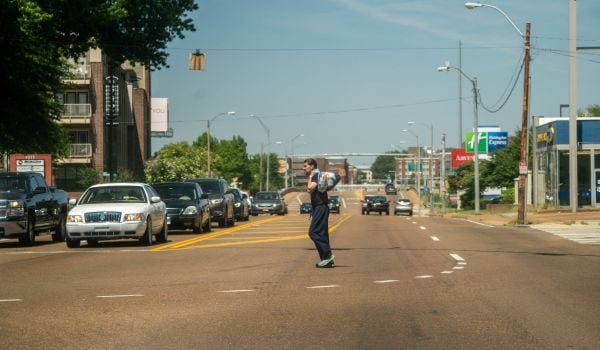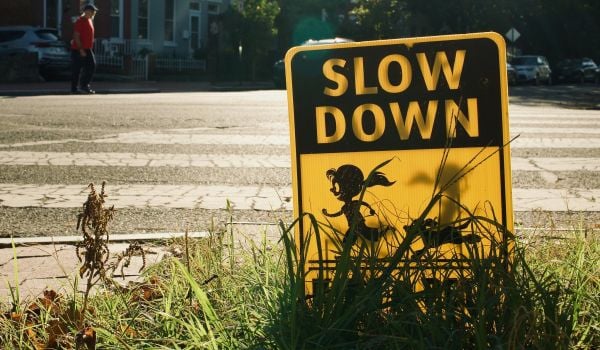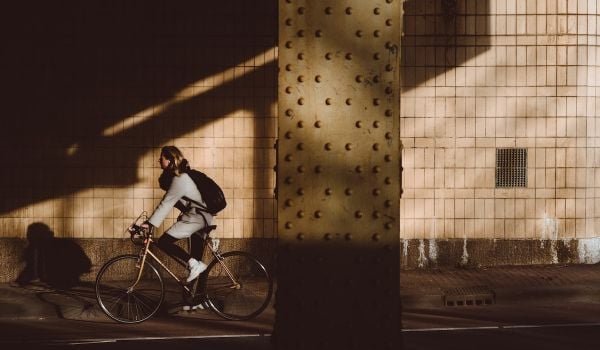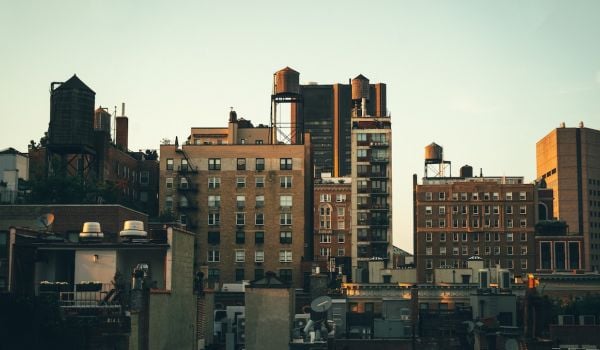2016 was a good year for complete streets policies. According to a new report ranking municipalities on the accessibility of their roadways for biking and walking, more cities saw the light last year than ever before. Or, at least, than ever previously measured.
Smart Growth America’s Complete Streets Coalition releases the report annually (here’s Next City’s coverage of the 2015 results). This year’s top winners include Brockton, Massachusetts; Missoula, Montana; and Wenatchee, Washington, all three with perfect scores of 100. Last year, policy out of the city of Reading, Pennsylvania, received the group’s first-ever perfect score. The 13 communities listed below had the highest ranked policies of 2016.
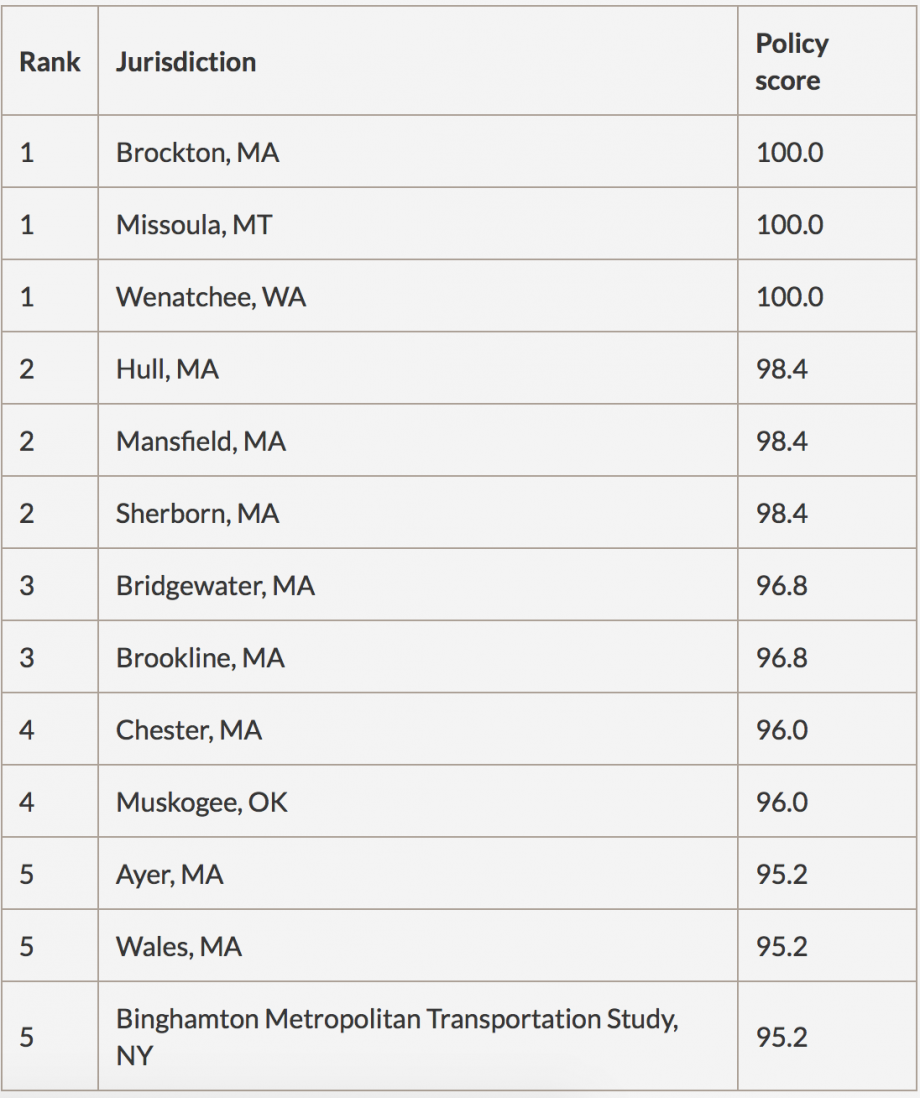
(Credit: Smart Growth America)
To assess a city’s streets, the coalition looks at resolutions, internal policies adopted by leadership, statements codified by stakeholders and tax ordinances. It measures those policies on a number of merits, including vision, design, implementation steps and the consideration of “all users and modes,” among others.
Communities adopted a total of 222 new complete streets policies in 2016, making for a nationwide total of 1,232 policies in the U.S and Puerto Rico. That’s more than a two-fold increase from the previous year, when 82 communities adopted such laws. As Next City’s Kelsey E. Thomas wrote last year, there were only 32 in place roughly a decade ago.
The quality of complete streets policies also rose in 2016, partly due to two state governments, Massachusetts and Washington, that have enacted incentive programs encouraging cities and towns to pass pedestrian- and bike-friendly laws.
“When the Coalition first analyzed complete streets polices in 2006, the median score was 34,” the report states. “By 2015, that number had risen to 68.4. In 2016, the median score leapt to 80.8. Before 2012, no policy had ever scored higher than 90. And it wasn’t until 2015 that any policy scored a perfect 100. In 2016, 51 policies scored a 90 or higher, including 3 policies that scored a perfect 100. These gains are a testament to communities’ commitment to passing strong, impactful policies.”
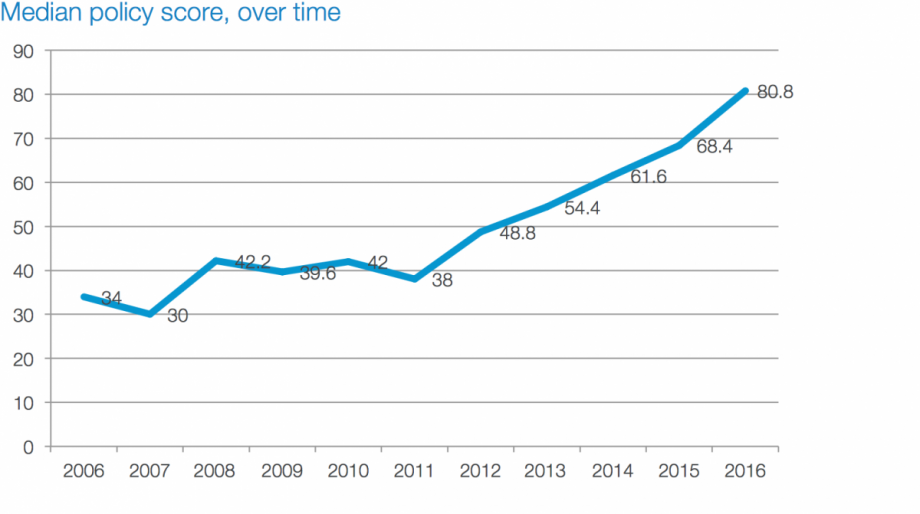
(Credit: Smart Growth America)
“A big part of why policies are scoring so well is that more and more communities are looking at the big picture,” Emiko Atherton, director of the National Complete Streets Coalition, said in a release. “They’re not just looking at one or two streets, they’re looking at entire transportation networks. And they’re not just looking at a policy as the sole solution, they’re looking at the entire complete streets process including implementation.”
However, equity concerns remain. This year’s report was the first to analyze the income and racial demographics of the jurisdictions eligible for scoring. And the cities that passed comprehensive policy tended to be whiter and wealthier than the national average.
“These trends mean that many low-income communities and communities of color are not accessing the economic and safety benefits of a complete streets approach at the same rate as other communities,” the report states. “Compounding this is the fact that these communities are overrepresented among pedestrian fatalities, and perhaps in most dire need of safer streets for people biking and walking.”
Overrepresented is sadly correct, as a report on pedestrian-safety noted earlier this year.
While people of color account for only about 35 percent of the population, they make up more than 46 percent of pedestrian deaths. Native Americans are the most over-represented, making up 2.7 percent of pedestrian deaths and only 0.7 percent of the population. Hispanics make up 21.5 percent of pedestrian deaths, and African-Americans 19.3 percent. [And] people of color are less likely to own a car or to have access to public transportation, so they are more likely to have no choice other than to walk along roads without safe pedestrian infrastructure.
The full report can be viewed here.

Rachel Dovey is an award-winning freelance writer and former USC Annenberg fellow living at the northern tip of California’s Bay Area. She writes about infrastructure, water and climate change and has been published by Bust, Wired, Paste, SF Weekly, the East Bay Express and the North Bay Bohemian
Follow Rachel .(JavaScript must be enabled to view this email address)



